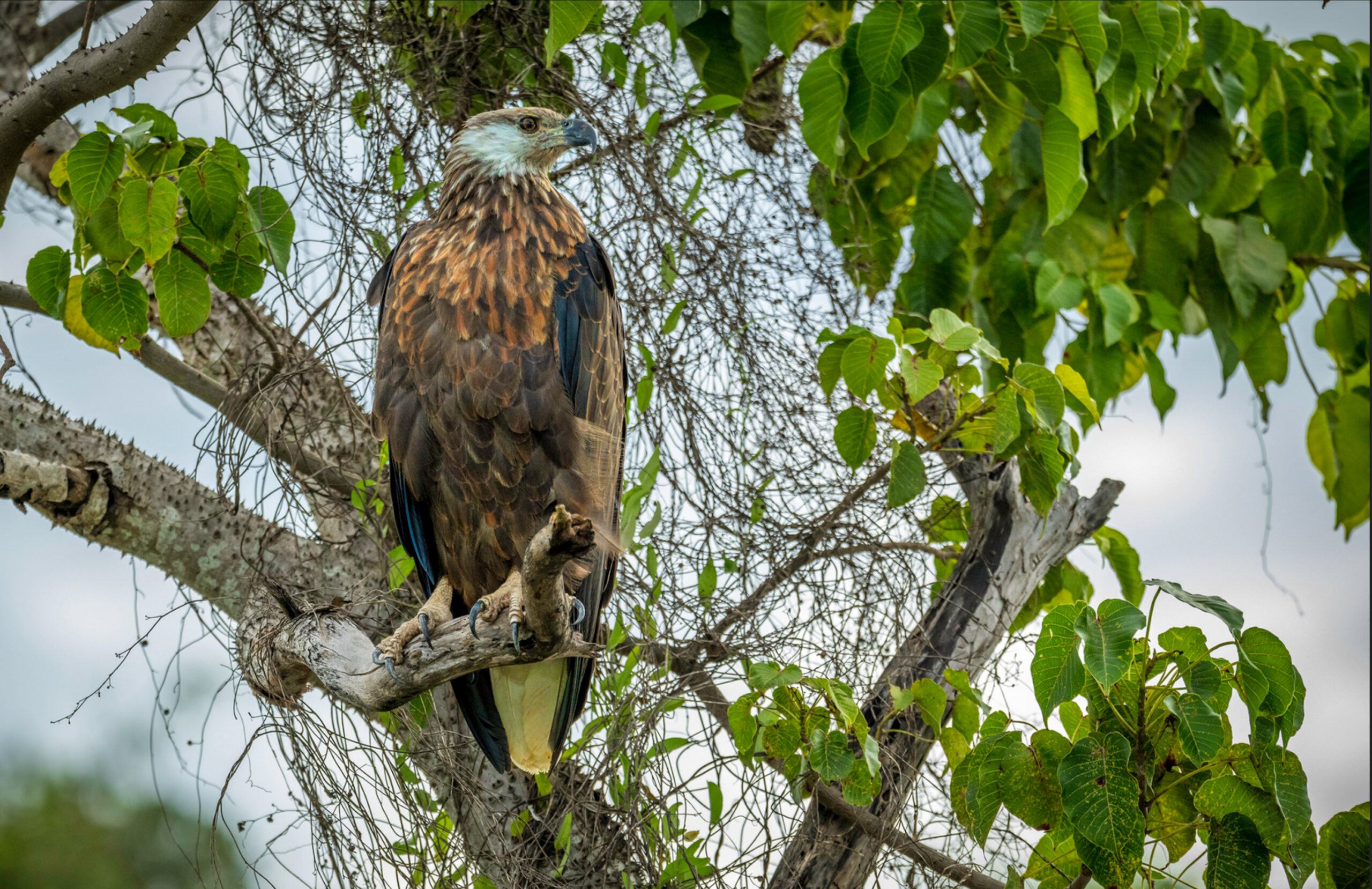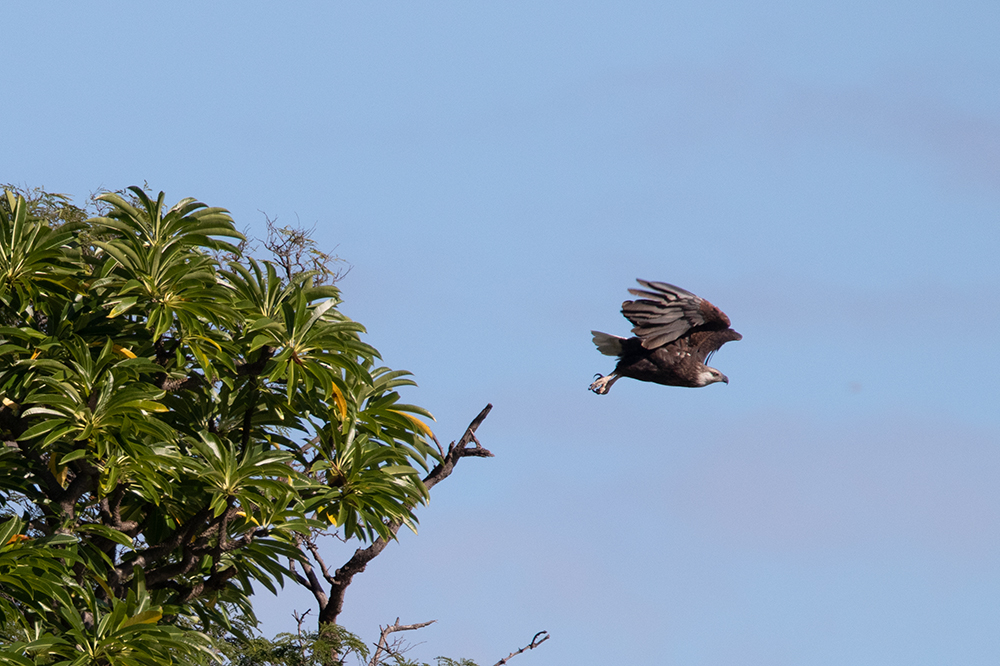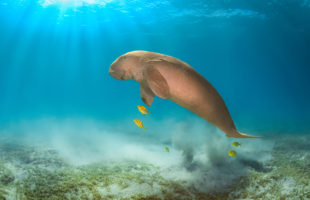Mighty dark brown wings, a sharp beak and claws that easily spear through a fish: These are the characteristis of one of the rarest birds of prey in the world. It occurs only – how could it be otherwise – on the eighth continent. We are talking about the Madagascar fish eagle (Icthyophaga vociferoides), Madagascar’s majestic largest bird of prey.
The Madagascar fish eagle is threatened with extinction
Only about 250 animals of this species live on the island, the species has become threatened by extinction long ago. They have found a last shelter in some protected areas such as Ankarafantsika and Nosy Hara national parks. Originally, they occurred all along the west coast from Morombe until Antsiranana (Diego Suarez). Today, only 120 breeding pairs are left in two regions isolated from each other, in Ankarafantsika and Antsalova north of the Tsingy de Bemaraha and along the northwest coast.
The life of the fish eagle is, as the name suggests, always bound to water. That is why lake Ravelobe has become one of the best watching spots for this species. Madagascar fish eagles are food specialists: They almost entirely live from fish. But they do not depend on native fish species: Their favourite food today is Tilapia, an introduced and widely bred species. Sitting enthroned wide above the lake, they espy their prey right underneath the water surface. As quick as lightning, in dive they fish it out the lake with their sharp claws. Only if feeding resources become poor, they switch to small crabs or birds as feeders. But fish eagles also love to work as thieves: A yellow-billed kite or a heron never can be sure that he can finish his meal, because it may happen that a Madagascar sea eagle steals it right from his beak. Mangroves, rivers, islands and lakes are potencial habitat for this species, but only few offer enough large trees, cliffs and clear, clean water. Fish eagles need high trees to brood, and also love to perch for hours there watching their environment.

Females call the shots in Madagascar fish eagles
Breeding season begins in May with the dry season. This is quite unusual since most other birds use the rainy season to raise their youngs, which is rich in feeders like insects. Generally, the females are dominant in Madagascar fish eagles. They mate with several males and let them help to build an appropriate nest made of many thin sticks. This is another unusual part of life in Madagascar fish eagles compared to other birds: Several males stay with one female for the whole breeding season. They even mate equally often with the female. But only two thirds of all matings lead to success, the oviposition. The female regularly lays two eggs, one earlier one some weeks later – but only one young survives. The later hatched bird will be eaten by his older sibling. If no young survives, the female often tries a second brood in the same season. The eggs need about 40 days to hatch. All males and the female care in the same manner for the offspring: They all feed and protect their young.
After little more than two months, the young bird becomes fledged. During the first days outside its nest, the young fish eagle trains his wings and discovers the environment by foot, jumping from branch to branch. It takes about ten days until the first trial to fly. In October, the breeding season ends and with it the territorial behavior of the older birds. From now on, everyone relies on himself again – until the rainy season is over. Young Madagascar fish eagles fly rather long distances. They are less stationary and switch between the residual habitats. They begin to settle and stay with their nest as soon as they have found a partner.
Male Madagascar fish eagles grow up to a weight of proud two and a half kilos. Females can even get one kilogram more and have a wing span up to 180 cm. In the sky, you can easily differentiate Madagascar fish eagles from other birds of prey: It has a relatively short, white tail, and is otherwise completely brown except white cheeks. Only young eagles have a striped head and a dark tail. This is how you can easily distinguish older from young fish eagles.

The biggest threat to the fish eagles is humans
Due to its majestic look, many places link myths to the fish eagles. That is why they sadly found their way into some traditional magical shamans’ tools: A cut off fish eagle foot is thought to give magical power. But only few fish eagles survive this cruel procedure. Only one one-legged, surviving animal is known and became downright famous: He lives nearby the lakes of Tsimembo and Manambolomaty. Despite his disability, he successfully mates and raises offspring.
The main threat for the Madagascar fish eagle are vanishing breeding habitats. Besides habitat destruction, humans compete directly for food and trees with the fish eagles: Lakes are used for fishing from surrounding villages. Waste and sewage pollutes the water bodies and take the last base of life from the eagles. People prefer to use the large trees to build pirogues, houses or simply cut them down in need of fire wood.
Since 1991, Peregrine fund from the USA supports the species conservation of the Madagascar fish eagle. Today they maintain the whole breeding area around Antsalova, enable research, educate local people and introduce sustainable agriculture. There is already a ray of hope: For some years, the population of the Madagascar fish eagle has been stable. And genetical research show that Madagascar fish eagle may have existed in small populations for centuries. Whether the fish eagle has a chance to survive still today in these small numbers, remains to be seen.
Pictures in header: Markus Bartels, fish eagle on Nosy Hara and Thorsten Negro, fish eagle in Ankarafantsika
- The Peregrine Fund
- Madagascar Fish-eagle prey preference and foraging success
Scientific article | USA 1999 | Authors: James Berkelman, James Fraser and Richard Watson - Sakalava fishermen and Madagascar fish eagles: Enhancing traditional conservation rules to control resource abuse that threatens a key breeding area for an endangered eagle
Scientific article | USA 2000 | Authors: Richard Watson, Riva Rabarisoa - Breeding biology, extra-pair birds, productivity, siblicide and conservation of the Madagascar fish eagle
Scientific article| USA 1999 | Authors: Richard Watson et al
 MADAMAGAZINE Your Magazine about Madagascar
MADAMAGAZINE Your Magazine about Madagascar




